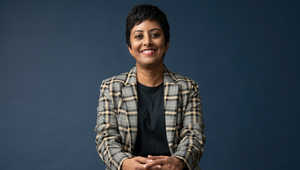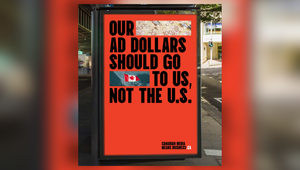
How Leo Burnett Brought the House Down with Australia’s Cannes Lions Grand Prix

Extreme weather is becoming an everyday fact of life for Australians. Right now, the East coast is being battered by storms and tens of thousands of Sydney residents are being evacuated from the city’s flooded suburbs. The country is facing one of its coldest winters in decades - and when the summer months roll around, gusting winds and arid conditions turn forests into tinder boxes, ready to ignite at the tiniest spark.
All of which makes Australia’s only Grand Prix win at this year’s Cannes Lions a rather bittersweet victory. One House to Save Many, created by Leo Burnett Australia for insurance company Suncorp, is a house designed by a crack team of experts to be resilient in the face of cyclones, bushfires and floods. The team - consisting of CSIRO [ Commonwealth Scientific and Industrial Research Organisation], James Cook University and Room 11 Architects - have devised novel applications of existing technologies to help Australian homeowners keep their homes and communities safe.
What makes this project so much more than an advertising campaign, and netted it the Innovation Lion Grand Prix, is that the ingenious solutions devised by the experts are being folded into Suncorp’s product and can be relatively easily implemented by ordinary people and builders.
When the team at Leo Burnett started out on this journey, though, they had no idea where it would take them. According to ECD Andy Fergusson, the campaign started life as a fairly regular advertising brief.
“It started, essentially, as an advertising brief for storm season. Every year we have storm season and they say, ‘clean your gutters out’ and all of that stuff. We started seeing a lot of this data showing the problem is much deeper than that. Houses are becoming uninsurable because they’re not built the right way. If we’re telling people to clean their gutters out, then it’s putting a BandAid on a massive problem,” explains Andy.
When Leo Burnett originally presented the idea of creating a concept house that would be resilient to these harsh conditions, the clients at Suncorp were adamant that they had to create something real, that the brand had a duty of care to do it properly. As an insurance company that trades on the trust people have in it, they had to know that they were working with the correct experts.
Indeed, Suncorp also saw a very real commercial application for the solutions generated by the team of experts - and they use the lessons learned from the project in the way they rebuild damaged houses. From a business perspective, this destructive weather forces up premiums - and homes in the most vulnerable areas risk becoming uninsurable. Preventative and defensive solutions like those devised in the campaign not only protect communities but also help Suncorp better serve its customers.
“It was one of the most commercial case studies I’ve ever seen,” says Emma Montgomery, CEO at Leo Burnett Australia. “Suncorp’s primary area of focus is Queensland, which is 20% of the population and 60% of the cost of disaster. So that’s the difference. Suncorp is significantly more expensive than the budget insurers, so you really need people to change their perceptions of ‘why would I spend more with you?’. And if I can help people change their behaviours, that’s ultimately going to help them in their duty of care in the area because if they can’t insure some of these spaces in Queensland, no one will. And people will not be able to live there anymore.”
From a creative perspective, seeing the various experts come together to swap insights and bounce ideas around was a rush for Andy and the team - not to mention an abject lesson in the power of collaboration.
“It was really cool. The first introduction between all of this group was very much a case of them going, ‘we’re just so glad someone’s brought us all together’. The biggest revelations were things that had multifaceted approaches,” says Andy.
Crucially, the experts were tasked with finding solutions that were accessible and affordable for ordinary house builders and homeowners. Andy’s favourite example is the use of mesh screen doors - which can be bought in ordinary hardware stores - and installing them around the balustrade. The architects came up with this to protect against debris in cyclones - but it also stops embers from getting through in a bushfire.
Rather cleverly, One House to Save Many also taps into Australia’s obsession with home renovation, and the makers hope that it will encourage people to consider where they focus on their upgrades. A snazzy new kitchen might be the more enticing option, but fixing one’s roof or drainage and investing in resilience could save your entire home.
Indeed, the project has even inspired Andy to take action with his own home. “The funny thing about this project is that I’ve literally spent thousands of dollars on my own house as a result of this. It’s something we’re living every day - floods, landslides, fires. Where I live, it’s just got everything.”
The next step in the campaign is to take the initiative from a single house to a whole street. Resilience Road sees a series of houses undertake a resilience transformation because the measures become more effective when an entire community partakes.
Indeed, that community spirit and collective action is key. “One of the things that I really learned when we did this project was the idea that when a disaster happens, [it causes] upheaval to the community. It’s not just that you lose your possessions. Kids can’t go to school. You can’t go to work, local businesses can’t open and so there’s such a huge impact to the community,” says Emma.
Ultimately, it’s a project about doing rather than saying. Suncorp is taking action and incorporating its learnings into its own product - and it is encouraging communities to take collective action too. As extreme weather conditions become more challenging, it’s no longer enough to create sad but beautifully-made messaging.
“A lot of where purpose goes wrong is when it just points a finger at the problem and says, ‘that’s a terrible problem’,” says Emma. “What’s great about this is that the creative solution is the answer to the problem, which is: ‘insurance should not be about protection. We need to shift the whole paradigm of the category to resilience’. And that’s about everyone in Australia. It’s in everybody’s interest. It’s a real leadership perspective for them as a company. This is a piece of work that has captured the attention of CEOs, the local government, the federal government, because they see that this is what we need to be doing.”
Both Emma and Andy hope that the solutions presented in the campaign will be adopted across Australia and beyond. They see it as a chance to not only shift people’s understanding of insurance from protection to an investment in resilience, but for Suncorp to step up and show real leadership. Right now, the impact of the climate crisis is getting harder for Australians to deny - as evidenced by the huge gains made by The Greens at the recent election - and if Suncorp can encourage even non-customers to take action it gives communities a better chance to survive and even thrive.















